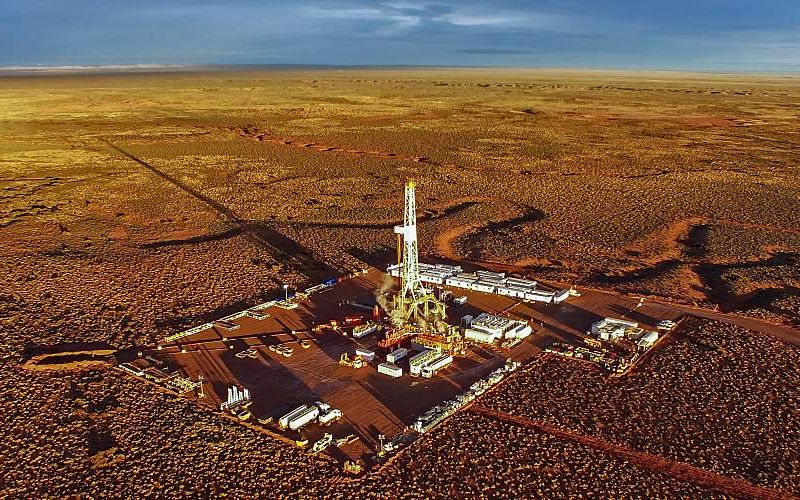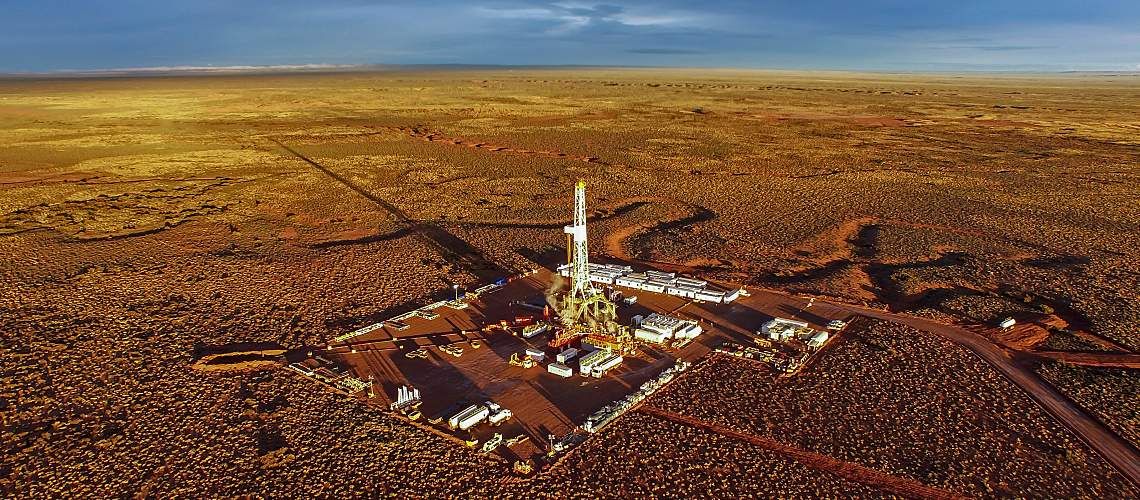Fracking Is Draining US Groundwater at an Alarming Rate


Today's energy giants aren't just drilling for oil and gas—they're after water, too. New fracking wells are consuming millions of gallons, often from aquifers that are already dwindling, according to The New York Times (NYT).
To stay ahead of the rest of the world in oil and gas production, U.S. energy companies are extracting more fossil fuels and using more water. With the novel techniques that operators have adopted, water use nationwide for fracked wells has increased sevenfold since 2011. In some cases, a single oil or gas well can use 40 million gallons of water. "Nationwide, fracking has used up nearly 1.5 trillion gallons of water since 2011. That's how much tap water the entire state of Texas uses in a year," according to the NYT.
A 2023 report from FracTracker Alliance also shows increasing amounts. The Alliance found that Colorado fracking companies doubled their freshwater use over the last 10 years.
Here's a closer look at changing methods to produce oil and gas, impacts on water resources, implications for the Safe Drinking Water Act, and the importance of water quality testing to ensure community health.

Fracking Drills Down and Out
Fracking is short for hydraulic fracturing. Water from aquifers is mixed with sand and toxic chemicals and pumped into the ground. The intended destination is impermeable formations like shales, which can't be tapped by conventional means. The high pressure cracks the bedrock and forces oil and gas out.
Although it's been known for many years, fracking became a major way to produce hydrocarbons just two decades ago, according to the National Resources Defense Council.
New chemicals made the fluid used less viscous—and new techniques for horizontal drilling let operators drill down vertically a short way and then horizontally for thousands of feet along targeted rock formations. The average length of a well in areas like the Permian Basin in Texas grew to 10,000 feet in early 2022 compared to under 4,000 feet in 2010, the NYT found.
But the longer the well, the more water required. That's disturbing because much of the country's fossil fuel comes from parched land where farmers stopped irrigating because they couldn't afford to drill deeper water wells. According to a 2016 Ceres report, more than half of the nearly 110,000 wells fracked between 2011 and 2016 were in regions with high or extremely high water stress, including Texas, Colorado, Oklahoma, and California.
Scientists expect the groundwater supply in Texas to drop one-third by 2070. That will result from higher temperatures, more frequent and severe droughts, and less groundwater recharge. It's a vicious cycle because fossil fuels are at the core of climate change, which depletes the same freshwater resources that are now diverted to produce fossil fuels.
Removing Water Prolongs the Hydrologic Cycle
To estimate water pumped for fracked wells, the NYT started with the chemical usage that oil companies reported in the industry database FracFocus Chemical Disclosure Registry. Currently, 23 states require reporting of information such as well locations, operators, chemicals used in fluids, and water usage.
Oil companies insist that water used for fracking is either brackish or recycled from previous fracks. But others claim that the amount of recycled water used is only a small percentage—accounting for just 15% in the Permian Basin. The Environmental Protection Agency explained that the water is contaminated with chemicals and hydrocarbons when it returns to the surface, and operators must then treat or dispose of millions of gallons of water, removing them from the natural water cycle.
Surprisingly, oil companies don't need permits to drill groundwater wells. Nor do they have to report or monitor water use unless it's a state requirement. That's true even when local communities are subject to water restrictions.
But residents are starting to fight back. A coalition of environmental and indigenous groups are suing the state of New Mexico for not protecting water resources. And Colorado residents are working to protect a reservoir the community depends on for freshwater.
Chemicals Endanger Water Quality
One other water issue relates to the chemicals used—acids to dissolve minerals, biocides to kill bacteria, gelling agents to carry sand into fractures, and corrosion inhibitors to prevent damage to steel well parts. Congress exempted hydraulic fracturing from most federal regulation under the Safe Drinking Water Act, so states make their own rules about chemical use.
A review by Fortune magazine found that energy companies reported using 28 chemicals regulated under the Safe Drinking Water Act. In July, U.S. Rep. Diana DeGette (D-CO) introduced legislation to give the EPA the authority to regulate hydraulic fracturing, eliminating the loophole in the Safe Drinking Water Act.
States that require disclosure of chemicals show significant declines in the use of hazardous chemicals and better water quality, according to a 2023 working paper from the National Bureau of Economic Research. A study from University of Chicago researchers found that states requiring energy companies to report chemicals used had less pollution from the activity, higher water quality, and fewer wells drilled.
Ultimately, a combination of disclosure to report water and chemicals used—and testing to ensure adequate safe water where wells are fracked—can help protect human and environmental health.






